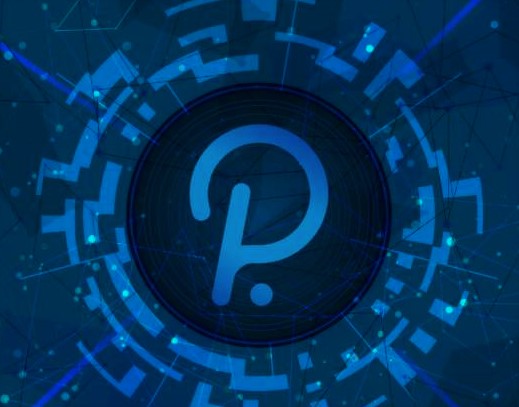
Polkadot
Polkadot Token (DOT) is a token for the network. Polkadot, on the other hand, is a blockchain protocol that aims to create a global network of computers to run blockchain projects on top of which users can start and run their blockchain projects. Currently, there are almost 990 million DOT in circulation, while the total supply of Polkadot coins is unknown. These tokens are used effectively to strengthen the connections in the network, enabling Polkadot’s governance and promotion.
Working of Polkadat
The Polkadot network operates in a sharded model similar to ETH 2.0. Shards (each blockchain connected to the Polkadot network) are called parachains. These parachains run concurrently and allow transactions to be processed individually rather than sequentially. Parachains is the royal blockchain. Each parachain in the network maintains its own journal, has its own unique status, adds block transactions to its own blockchain, and has its own governance structure and users. As long as parachain can compile the WebAssembly programming language and supports Relay Chain, the block of Polkadot, it can connect to the Polkadot network.
Polkadot’s ring chain acts as the backbone of the network. It unites all the states of the parachain into a single state – “state state”. Each parachain has a Relay Chain support to accommodate and support its parachain block. Parachains gather and provide blocks and facilitators to the chain of circulation, where the blocks go through hard access and proper analysis. Once approved, blocks are added to the respective parachains, and actors are automatically replaced for the next block. As the relay chain provides a security guarantee, the participants – the nodes of these parachains – are not responsible for security. This allows them to interact without too much trust. They share the state and logic of the Polkadot network.
For blockchains that rely on their own verification system (such as Bitcoin), the Polkadot network has built parachains that provide two-way compatibility. These bridges enable transactions between the Polkadot network and independent blockchains, providing true interoperability. In the case of Bitcoin, such a bridge allows bitcoin holders to “teleport” their coins to the Polkadot network as PokaBTC, and in turn to burn PolkaBTC for real bitcoin.

Use Case
Polkadot was created in 2016 when Ethereum co-founder Gavin Wood realized the need for a chain of relays to connect an autonomous blockchain network. It is an open platform with a low barrier to entry that connects and secures an autonomous economy under its security umbrella. Polkadot tries to solve three main problems:
Interoperability: As the crypto space has evolved over the past decade, thousands of blockchains have emerged. Although it is unlikely that they will all be available in a few years, the future will almost certainly consist of many different blockchains with unique and unique functions. Currently, blockchain networks like Bitcoin or Ethereum are independent and work without communication or interaction between them. In order for a truly trustless ecosystem to grow and succeed, this gap must be addressed. Gavin Wood’s solution is to create Polkadot which is designed to allow smart contracts on one blockchain to easily interact with data and assets on other blockchains.
Scalability: Currently, many blockchain transactions are processed sequentially in the network space, which creates congestion and hinders the speed of transactions. Polkadot is designed to remove these obstacles by allowing multiple parachains to operate simultaneously through four chains, with each parachain processing multiple transactions simultaneously. If multiple blockchains can run simultaneously, the scalability of this system will be about a hundred times greater than the current Proof of Stake system. Potentially, the last iteration of Polkadot could have multiple four-color chains added to the root ring chain, resulting in 1000x to 10,000x greater scalability than current PoS systems. Since Substrate is used to create the Polkadot blockchain itself, the same technology as many parachains will be used to build it, this can be done. Security: In today’s blockchain network, chains compete for security resources. Polkadot, on the other hand, aggregates security within the network, allowing individual chains to leverage existing collective security rather than starting from scratch to achieve trust. This allows independent blockchains with different levels of security to strengthen each other’s weak points by pooling their security and transferring them to the Polkadot blockchain. Even better, Polkadot’s shared security system does not require a community of validators to protect the system, allowing each blockchain’s network to focus on scaling or execution while deferring security in the chain.
Secondary use case
Polkadot’s flagship community network is DOT, which serves a variety of purposes. When it comes to governance issues such as determining network fees, trading power, and regulating other parachains,
DOT token holders control the direction of the network. DOT holders, as in other blockchains, are responsible for making decisions about special events such as network upgrades on the Polkadot platform.
DOT users also support the verification process under Polkadot. For the Polkadot platform to work efficiently and process legitimate transactions on the parachain, DOT holders submit their tokens to the network to operate the chain. To discourage malicious intent in the network, participants face the risk of losing their lives. The amount of DOT required to join the network depends on a few factors such as the service, the length of time the DOT is installed, and the total number of DOTs.
Another function of DOT is that it allows adding new parachains by blocking DOT in a process called Bonding. In that link, DOT is temporarily locked and returned to the original account after the parachain is removed.

